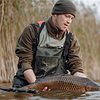Disclosure: Some posts contain affiliate links, which earn us a commission if you make a purchase through them. Positive Fishing © participates in various affiliate networks including the Amazon Services LLC Associates Program.
Nymphs and dry flies will always catch plenty of trout and bass, but streamers will almost always produce larger fish better than any other type of fly. Due to their sheer size, you’ll find yourself targeting big fish and often reaping the reward.
Fly anglers can only tolerate catching small fish for so long. The days on the water catching small stocked trout or tiny bass aren’t always the most fun. Regardless of the number of fish, there’s always a desire to land a bigger trophy fish.
In this article, I will cover:
- What is a Streamer?
- What Fish Eat Streamers?
- When Should I Use a Streamer?
- How do I Fish with Streamers in Moving Water?
- Focus on Pools
- Focus on Cut Banks
- How do I Fish with Streamers in Still Water?
- Structure is your Best Friend
- Find Other Bait
- Best Streamers
- Woolly Bugger
- Clouser Minnow
What is a Streamer?
Streamers are a giant category of flies that are bigger and a bit more active than dry flies and nymphs. Streamers often imitate everything from baitfish to crayfish. Any sort of larger prey that a fish would want has a streamer representation.
They’re used with 4x and higher rods with a bit heavier leader. If you’re throwing a streamer, you know you have the potential to land a more aggressive fish interested in eating a large bait representation. These flies are tied on size 0 to 8 hooks.
What Fish Eat Streamers?
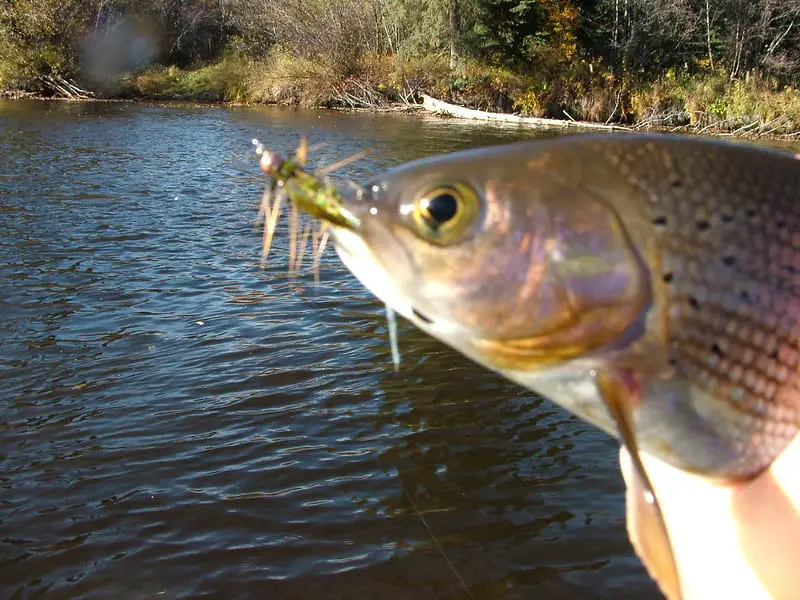
If you’re pursuing trout, pike, bass, salmon, and any sort of predator fish, you’ll want to use streamers. These fish will all eat minnows, crayfish, and leeches. If any of these are prevalent in the water you’re fishing, throw a streamer representation.
Larger fish are very often ambushing predators. They’ll sit in cover and dart out in pursuit of these baits. They require a bit of action on the part of the angler, but they are a blast to use! You’ll never be bored in your pursuit of a trophy.
When Should I Use a Streamer?
You can use a streamer at almost any point. If you know fish are feeding, tie on a streamer. In moving water, they work great in deep pools and cut banks. If you know you’re going to have to get deeper in the water column to find the fish, streamers are the perfect fly to use. They fall quickly and move quite a bit of water.
In lakes, you can cast them near structures or other areas where fish sit and wait to eat. You’re often going to be fishing blind with streamers. You won’t be able to see the fish you’re targeting, but you won’t have to wonder if you’ve had a bite! Fish will hit streamers with quite a bit of aggression. They don’t want the prey to get away, so they attack hard.
Tip: Streamers are generally considered the best fly choice to fish with when no insects are hatching, either before or after the hatch.
You can learn more about the best fly types to choose from and when to use them for the best results.
How do I Fish Streamers in Fast Moving Water?
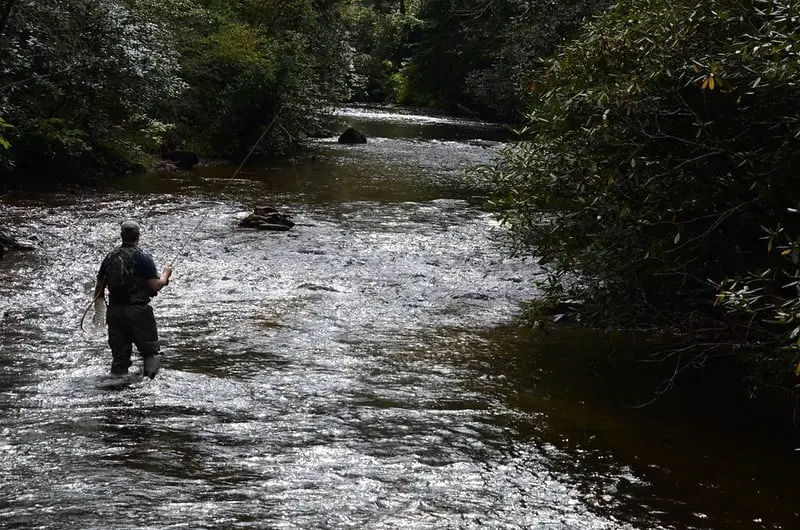
When you’re looking to use streamers in rivers, streams, and creeks, there are going to be a few places that you need to focus on. Don’t just cast the fly into the middle of the river and expect to land fish even though it’s a larger pattern!
Focus on Pools
If you can find a “pool” in a river, you can automatically assume there are fish in it. Pools are slow-moving water that often have riffles on either side of them. They’re a deeper portion of water that holds fish.
Fish don’t have to work as hard to stay in these pools because the current isn’t as strong. Plus, food funnels in through the riffles, and fish have plenty of time to strike and eat their fill!
When you’re fishing with streamers in a pool, break the pool into three different sections. Many anglers will throw directly into the middle and often ruin their chances of landing a fish! Even though you’re throwing a big streamer that looks realistic, the food still needs to be presented accurately.
Start by standing even with the riffles and throwing your fly into the riffles. This will allow the fly to naturally drift into the beginning of the pool. Once it gets through the rocks and is sucked under by the current, let it sit.
You want to give the fly a chance to get to the depth where the fish are sitting. You don’t want to let the fly drift through the entire pool if at all possible. Once your fly is halfway through the pool, start stripping towards you. As you strip, be prepared for a strike. Fish hate to see large bait get away. They’ll dart out from their hiding place in the pool and feed.
Your next area of the pool to focus on is the middle. The middle of these pools is usually the deepest. Your fly is going to need time to get to the bottom of the pool! To best accomplish this, stand just below the middle of the pool and cast upstream near the riffles. The current will be the strongest at the beginning so your fly will drop quickly in the water column. As the fly gets closer to you, strip in the slack and lift your rod tip. This will give all the power to the fly and let it fall. Once the fly has drifted past you a bit, start stripping towards yourself out of the depth. Fish will follow!
The final area of focus should be the back of the pool. You can stand below the pool and cast into the back end of it or you can stand at the front of the pool and let your fly swing to the back. Either method is going to work.
While most fish stack up at the beginning of the pool, there are definitely fish that will sit towards the back of it. Dead drifting or swinging through this section is a great way to land any stragglers.
Focus on Cut Banks
Cut banks are also great areas to throw streamers. The water goes further under the bank than you would imagine. Most large fish will hang out in the back parts of these banks and wait for food to drift across their faces.
If you cast your fly upstream of a cut bank, you can dead drift the streamer across the bank and wait for a fish to come out and grab it. You’ll likely have to high-stick your way through the bank to ensure you aren’t getting any tangles!
How Do I Fish with Streamers in a Lake Or Still Water?
Fishing with streamers in lakes is a blast. Fish quite often see large lures and soft plastics near them, but they rarely see flies in still water. As a result, you’re going to have a huge advantage! As long as your flies look realistic, you’ll be in good shape.
Fish Prefer To Be Near Structures
Like any angler would tell you, focus on fishing near structure. Even if the fish is large, it wants to have some cover. Fish don’t like to be exposed if at all possible. Whether it’s a large pile of rocks or a fallen tree, cast your streamer near or into these areas of structure. You’ll be shocked at the size of fish you may find next to a small tree or rock. You’re going to have to give the fly quite a bit of action.
In rivers, the current causes the fly to twitch. In still water, you’ll have to do short and long strips to make sure the fly attracts the right attention. Be ready because fish will often hit on the fall.
Tip: Structures can be underwater or an overhanging structure. Fish will hide and wait for food in these preferred areas.
Find Other Types Of Fishing Bait
If you can locate other bait in the lake or pond, don’t be afraid to throw your streamer into it. Fish are likely sitting right behind or next to bait piles waiting for the right moment to strike.
The least amount of disturbance you can cause, the better. You don’t want to scare all the bait away because the larger fish will know something is wrong. Strip your way through the bait pile and wait for fish to strike. It may take a bit of time for the predator fish to be comfortable with your fly choice, but you’ll eventually convince them.
What Are The Best Streamer Options?
Finding streamers that work for you does not have to be overly complicated. There are a few popular staples that have been around for years that continuously produce trophy fish no matter where you’re fishing in the world.
The two most common streamer flies are:
Woolly Bugger
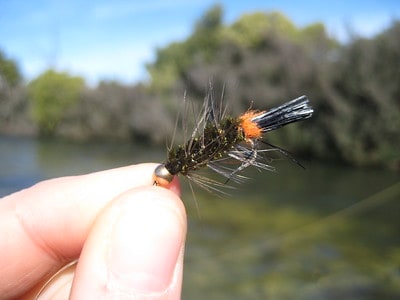
The Woolly Bugger is the most well-known streamer in fly fishing. It isn’t an exact imitation of anything, but it looks like it could be a variety of things. It can look like a minnow, a leech, and even a crayfish. The fly comes with or without a bead head and you can find it in dozens of different colors. The size ranges anywhere from size 2 to size 8 depending on what you need. If you want versatility, purchase the bugger.
Clouser Minnow
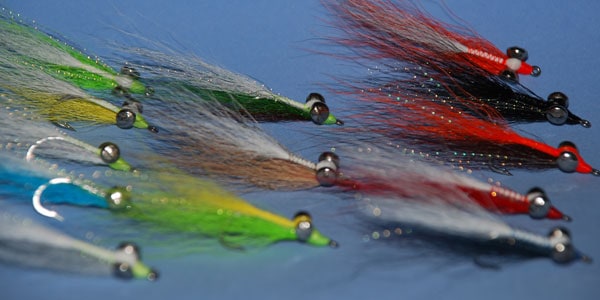
The Clouser Minnow is another beautiful option! It’s heavy and is a wonderful imitation of a fleeing baitfish. Give this fly quite a bit of action when you’re fishing with it. You can find it in numerous colors and purchase it from a size 0 hook to a size 6 depending on what you need. These flies are extremely easy to use.
Final Thoughts
Fishing with streamers can catch a large range of fish and the fish generally tend to be slightly larger in size.
Always go with the Wooly Bugger and the Clouser Minnow for the best chance of catching that elusive large trout, bass, or any predator fish on both rivers or lakes.
You can learn more about alternative fishing fly types such as Dry Flies and Nymphs including all the specific tips and techniques needed to be successful.
- Wading Belt Essentials: Ensuring Safer Fishing - January 9, 2024
- Fishing For Catfish (Top Tips, Bait, & Gear To Catch The Big 3) - October 20, 2022
- Fishing Line Strength Vs. Diameter Chart: Why Is It Important? - October 12, 2022

